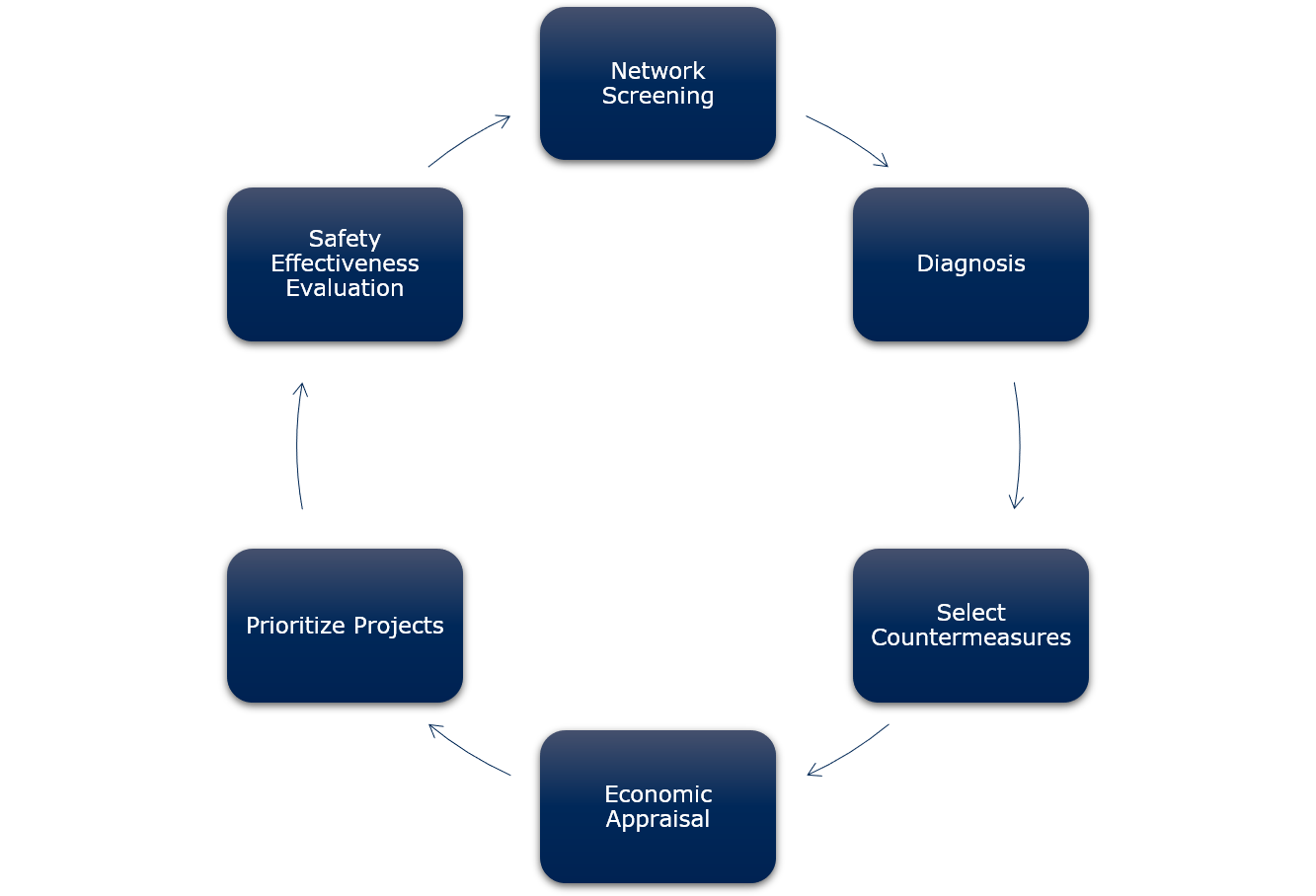According to FHWA, safety management can be defined as a management approach to highway safety "to eliminate or reduce existing and potential highway hazards and to reduce the number and severity of accidents on all roads where such a system is applied".
There are numerous elements of highway safety management to aid in the decision making. First and foremost, each agency should have its short-term and long-term goals for resource allocation and implementation of safety plans. Accountability is an essential management tool for tracking the safety plans. The other key elements are maintaining ] of an integrated database to better support decisions, safety analysis tools and techniques, coordination among agencies for multi-disciplinary contributions to safety management, training and technology/information exchange.
The three major components of highway safety management: as per FHWA's Highway Safety Improvement Programs (HSIP, 23 CFR 924) are Planning, Implementation and Evaluation.
- Planning - identify, investigate, analyze and set priorities. Intra-and inter-agency coordination should be conducted to include consideration of roadway, vehicle and driver countermeasures.
- Implementation - schedule and implement various safety projects.
- Evaluation - conduct accident analyses to determine project/program effectiveness to improve future safety decisions.
A Safety Management System (SMS) needs to maintain a comprehensive safety related database that can provide the essential and foremost components of safety analysis. The safety related data can be obtained from various sources that experts often consider having a causal relationship with the prevailing safety condition. The various safety data sources included in the Safety Management System includes law enforcement reported crash records and citations, highway safety grant tracking data records, and horizontal and vertical curves dat. a As a part of an integrated asset management system, the SMS also has access to roadway attributes from the Transportation Asset Inventory (TAI) that is also being implemented by the State. Currently the TAI module includes Sign Inventory Data, Pavement Markings and Markers Data, and Barrier/Barricade Data, as well as select roadway inventory data. The safety management system flow diagram is presented below (adapted from Highway Safety Manual,2010).
The systematic flow of Safety lifecycle management is defined as follows:
Network screening: Process of identifying and ranking high crash locations from highway network. This includes the network screening in the simplified flow diagram.
Diagnostics: Understanding crash patterns and physical characteristics of locations identified through the Network Screening Process and reviewing past studies of these locations. This includes diagnosis in the simplified flow diagram.
Countermeasures: roadway strategy intended to decrease the crash frequency or the severity (or both) at a location. This includes select countermeasures in the simplified flow diagram.
Project Planning & Evaluation: The objective of the Project Planning & Evaluation is to review the possible projects or project alternatives and to develop an ordered list of recommended projects based on the results of a ranking or an optimization process. This includes economic appraisal to safety effectiveness evaluation in the simplified flow diagram.
